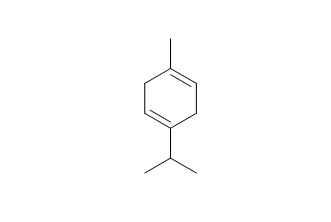p-Mentha-1,4-diene
p-Mentha-1,4-diene may possess strong antimicrobial and antioxidant properties.
Inquire / Order:
manager@chemfaces.com
Technical Inquiries:
service@chemfaces.com
Tel:
+86-27-84237783
Fax:
+86-27-84254680
Address:
1 Building, No. 83, CheCheng Rd., Wuhan Economic and Technological Development Zone, Wuhan, Hubei 430056, PRC
Providing storage is as stated on the product vial and the vial is kept tightly sealed, the product can be stored for up to
24 months(2-8C).
Wherever possible, you should prepare and use solutions on the same day. However, if you need to make up stock solutions in advance, we recommend that you store the solution as aliquots in tightly sealed vials at -20C. Generally, these will be useable for up to two weeks. Before use, and prior to opening the vial we recommend that you allow your product to equilibrate to room temperature for at least 1 hour.
Need more advice on solubility, usage and handling? Please email to: service@chemfaces.com
The packaging of the product may have turned upside down during transportation, resulting in the natural compounds adhering to the neck or cap of the vial. take the vial out of its packaging and gently shake to let the compounds fall to the bottom of the vial. for liquid products, centrifuge at 200-500 RPM to gather the liquid at the bottom of the vial. try to avoid loss or contamination during handling.
United States Patent Application2020, 20200038363
Korean Herb. Med. Inf. 2016, 4(1):35-42
Int J Mol Sci.2023, 24(18):13713.
Natural Product Communications2020, doi: 10.1177.
Front Pharmacol.2022, 13:870553.
Evid Based Complement Alternat Med.2020, 2020:1970349.
Chem Biol Interact.2022, 368:110248.
J Mass Spectrom.2022, 57(2):e4810.
AMB Express2020. 10(1):126.
Photodermatol Photoimmunol Photomed.2024, 40(1):e12950.
Related and Featured Products
Records of Natural Products,2010,4(1):49.
In vitro Antimicrobial, Cytotoxic and Radical Scavenging Activities and Chemical Constituents of the Endemic Thymus laevigatus (Vahl).[Reference:
WebLink]
The leaves of Thymus laevigatus (Vahl), Lamiaceae (Labiatae), an endemic species of Yemen, are traditionally used in the treatment of various disorders including stomach and respiratory system.
METHODS AND RESULTS:
In a first biological and chemical study of this endemic species we investigated antimicrobial, cytotoxic and antioxidant activities of different extracts of the leaves of this plant. The preliminary phytochemical screening of extracts composition was performed by TLC while the composition of the essential oil was determined by GC-MS. Twelve constituents were detected from the essential oil, which constituted 99.6 % of the total amount. The major constituents of the oil were: carvacrol (84.3 %), p-cymene (4.1 %) p-Mentha-1,4-diene (4.0 %) and trans-anethole (3.6%). The main active components were identified by TLC as carvacrol and anethole for dichloromethane extract and as non-volatile phenols and flavonoids for the methanol extract. The methanol, dichloromethane and aqueous extracts were tested for their antimicrobial activities against five bacteria strains and six human pathogenic fungi. Both methanol and dichloromethane showed strong activities against most human pathogenic strains. In the contrast, methanol extract showed broader and stronger antibacterial activities than the dichloromethane extract, especially against the Gram-negative bacterium Pseudomonas aeruginosa. The methanol extract showed the same strong radical scavenging activity in the DPPH assay (14.9mg/ml), when compared to the standard antioxidant, ascorbic acid. In contrast, the cytotoxic activity of the methanol against FL cells, a human amniotic epithelial cell line, was only moderate (IC50 298, 8 mg/ml). On the contrary, the water extract did not show any biological activity.
CONCLUSIONS:
Results presented here suggest that the essential oil and extracts of Thymus laevigatus possess strong antimicrobial and antioxidant properties, and therefore, they can be used as a natural preservative ingredient in food and/or pharmaceutical industry.



